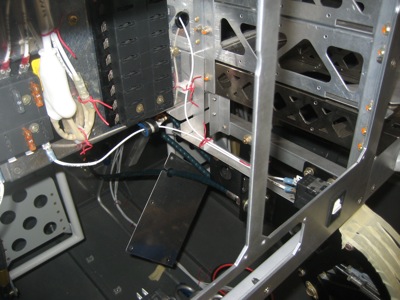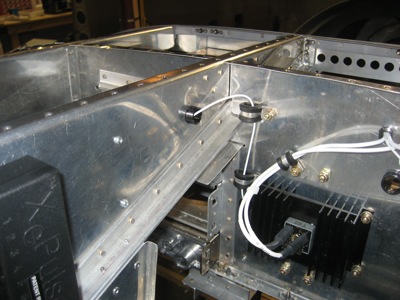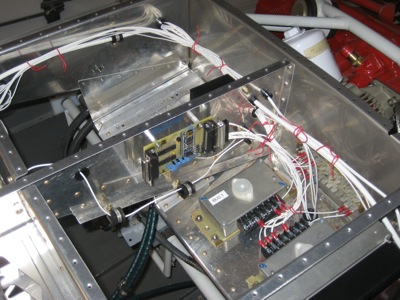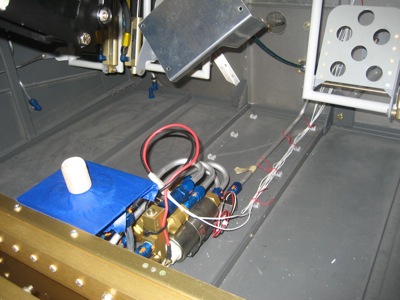Now that the holiday season is officially over, I have no excuse for not working on the airplane. Tonight after work I managed to find the time and energy to finish the wiring for the electric fuel pump. Here you can see how the power for the fuel pump comes off of the bus 1 fuse block, runs along the throttle support bracket to the fuel pump switch, then goes back up the subpanel and disappears into a snap bushing. The metal plate hanging on the throttle cable below is supposed to be there – ignore that.

On the reverse side of the subpanel, the wire heads upward, snakes through some adel clamps, and passes through the center subpanel rib via another snap bushing. By the way, all the adel clamps in these photos are currently way oversized for ease of running wires – when I'm finished wiring and I know the size of each wire bundle, I'll install correctly-sized clamps.

On the starboard side of the center rib, it continues through some more adel clamps, then takes a dive down through snap bushing in the avionics shelf. I know it seems like a circuitous route, but it's actually more direct than it appears.

From there the wire goes down the firewall, across the floor, and connects to the fuel pump via a Molex connector. A corresponding ground wire then goes back up the firewall to the ground block.

I powered up the bench supply, turned on the master, and briefly flipped on the fuel pump switch just to check the wiring – it ran! I turned it off immediately to keep it from sucking up any fod. I had previously blown out and capped the fuel lines, but given how dirty the floor of my airplane is right now, you can't be too careful.
One fact worth noting is that my fuel pump is connected to bus 1 – the "main bus" in Bob Nuckolls parlance – instead of bus 2, the "endurance bus". I would have liked to put it on bus 2, but since the fuel pump can draw up to 7 amps, I calculated that I just don't have the power budget. This means that if the main alternator fails and I turn off bus 1 to shed load, I won't have an electric fuel pump. However, the electric pump is just a backup to the engine-driven pump – the odds of seeing simultaneous failures of the main alternator and the mechanical fuel pump seem so remote as to not be worth worrying about. Besides, I will still have the option of leaving bus 1 powered up if I'm not worried about maximizing alternator-out run time… i.e. when I'm about to land anyway.